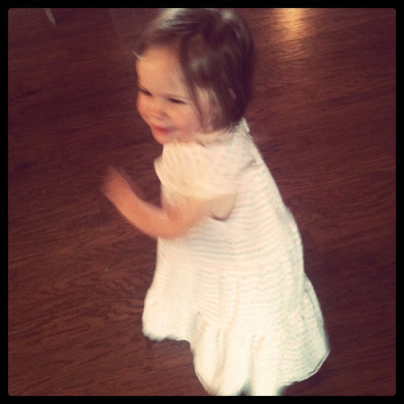a princess problem, part one
This morning I was a scientist studying lions and a magic doctor healing giraffes. I was a three year old girl holding a baby jaguar; I was a "halt-man" (which is exactly what it sounds like); and I was a pony running through a candy forest. I was friends with a lion, a little girl, another pony, and finally, a princess.

She put on an ancient nightgown. "I think this twirls," she said, experimenting. "I must be a princess!"
Time to engage in some research. "What do princesses do?" I asked.
"I don't know," she said. "They organize things."
Then,
"Sometimes," she continued, "people think I'm a princess."
"Why do they think that?" I asked.
"Because they think I'm pretty," she said nonchalantly, and then with passion, "Chase me!" And we're back to tag, running in circles around the house, the all-time favorite activity.
I have nothing against twirly skirts, telling our daughters that they are beautiful, or fairy tales with happy endings. I like love stories, including my own, which, incidentally, began a long time ago in a faraway land and involves a strong man with kind eyes.
I have nothing against princesses, when they are done right. And I think even Disney does them right, sometimes.
But I get all up in arms when the role model suggested - by Christians - for my three year old daughter is a beautiful, silent, passive, nameless, objectified teenage princess who only needs a man chosen for her to marry in order to have a happy ending.
Oh, this book gets my heart rate up. I've tried to ignore it for a year now, but it keeps showing up. And I looked at reviews online and they're all positive! So I am compelled. I'll tell you more about this book (and its counterpoint for boys), and why I - not to mince words - hate it, in a few days, when I calm down. Or even if I don't.